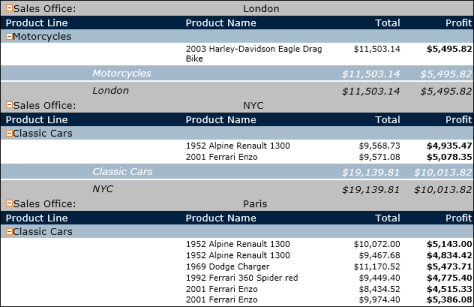Figure 7-12 shows the generated report. Although the filter specifies the San Francisco office and the Classic Cars product line, the report displays data for other sales offices and product lines. Without any grouped conditions, the filter includes rows that meet either conditions 1, 2, and 3 or just condition 4.
Figure 7-13 shows the generated report using grouped filter conditions. In this example, only two rows meet the defined conditions. The Sales Office = San Francisco and ProductLine = Classic Cars conditions must be true, then either the Total >= 8000 condition or the Profit >= 4500 condition is true.
|
Figure 7-13
|


